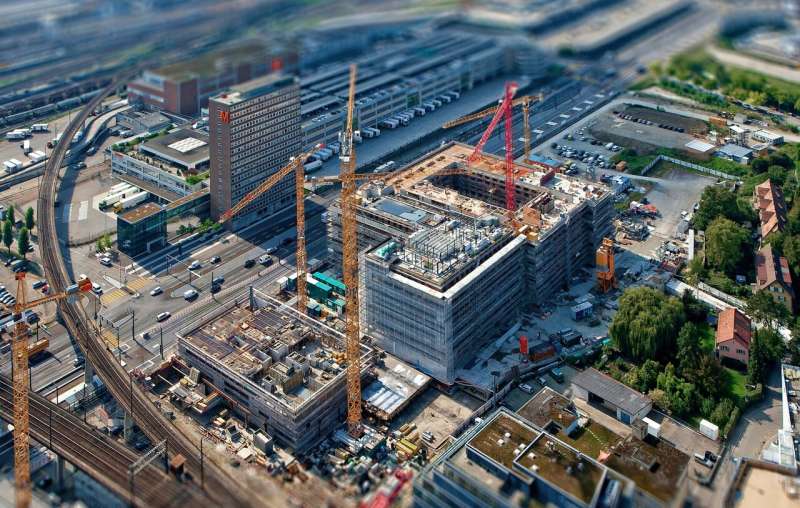This article has been reviewed according to Science X's editorial process and policies. Editors have highlighted the following attributes while ensuring the content's credibility:
fact-checked
trusted source
proofread
US can cut building emissions by up to 91%, saving $100 billion a year in energy-related costs, modeling study shows

The US has committed to reaching net-zero emissions by 2050. To accomplish this goal, large cuts in emissions are necessary, especially in high-emission sectors like the building industry.
In an article publishing on August 18 in the journal One Earth, a team of researchers use a computational model to analyze several scenarios of future building energy use in the US. They find that by tackling emissions on multiple fronts and placing focus on "demand-side measures" that affect how power is drawn from the grid, such as technologies like electric heat pumps and smart thermostats, the US can achieve its climate goals, decrease building emissions by 91% from their 2005 peak, and save over $100 billion each year on energy costs.
"Meeting the US 2050 net-zero emissions target requires a rapid and cost-effective low-carbon transition across the entire energy system," writes the team of energy technology experts based at Lawrence Berkeley National Laboratory and energy consultants. "Commercial and residential buildings are a primary source of emissions and are key to this transition."
In the United States, the authors cite, buildings—including both public buildings, like offices, and private buildings, like homes—contribute 35% of the country's total greenhouse gas emissions.
In 2005, the US contributed 2,327 megatons of carbon dioxide in the buildings sector, setting a record for all-time high emissions. Since then, emissions have declined by 25%, and are projected to keep declining by up to another 41% by 2050. But we will need to keep cutting emissions to reach our climate goals, assert the authors.
For their analysis, the authorship team defines three main ways to cut building-related emissions. They argue that we should focus on making buildings use energy more efficiently, making the power grid more reliable by increasing the flexibility of how energy is managed by the grid, and utilizing low-carbon energy sources.
"There are no 'silver bullet' solutions for building decarbonization," write the authors. "Achieving deeper levels of emissions reductions will require a comprehensive mix of solutions addressing both the generation and end uses of energy—a true 'all-of-the-above' menu of solutions to decarbonize the built environment."
The team modeled "low," "moderate," and "aggressive" scenarios of this "all-of-the-above menu" to determine the degree to which we can cut emissions. They found that it's possible to reduce building emissions by 91% compared to 2005 levels by 2050, and that demand-side measures that increase the flexibility of the power grid, like heat pumps and smart thermostats, could contribute up to 45% of these emissions cuts.
"Flexibility will play an increasingly important role as variable renewable energy accounts for a larger share of power generation and distribution networks are challenged by growing demand for clean electricity," write the researchers.
However, achieving this level of emissions cuts would require the "aggressive" level of intervention from the researchers' model, and the authors emphasize that an "unprecedented scale and speed of building technology development and deployment" would be necessary, as well as a large-scale commitment to changing how we consume energy.
"Realizing this level of change in the building sector will require a rapid and sustained increase in investment alongside policy and regulatory support," write the authors. "We hope that this study can inform concrete policy approaches that accelerate energy system decarbonization across both demand- and supply-side technologies to fulfill ambitious targets for climate change mitigation in the US."
More information: Jared Langevin, Demand-side solutions in the US building sector could achieve deep emissions reductions while avoiding over $100 billion in power sector decarbonization costs, One Earth (2023). DOI: 10.1016/j.oneear.2023.07.008. www.cell.com/one-earth/fulltex … 2590-3322(23)00342-1


















